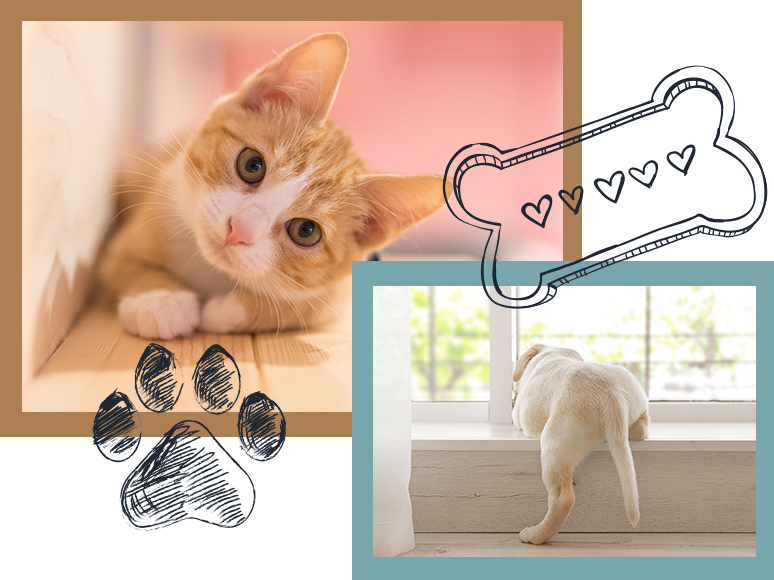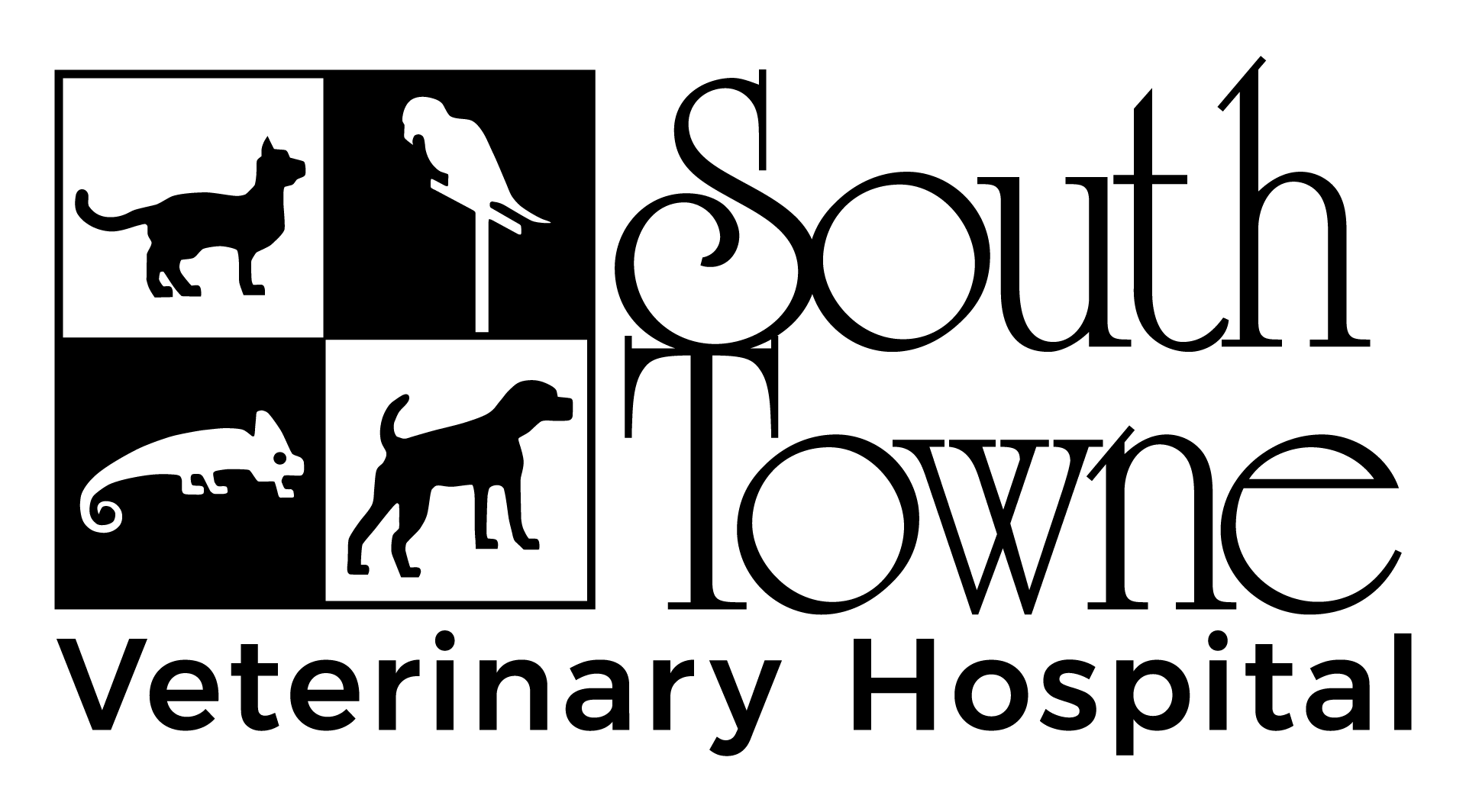Rochester Veterinary Dentistry
Pet Dental Care in Rochester for a Healthy Mouth
It is very important to keep your pet’s teeth clean of tartar and plaque. South Towne Veterinary Hospital is happy to offer pet dental care in Rochester. Our veterinarians can’t stress enough how important routine preventative care is for pets of all ages. Dental care falls into that category of care. More than 8 out of 10 dogs and cats over 4 years of age suffer from periodontal disease, a condition in which bacteria attack the soft gum tissue.
Even when teeth appear healthy, bacteria can build up in spaces between teeth and gums. It is not just a bad breath problem; it can cause discomfort and be a health risk. Research clearly shows that dental prophylaxis is one of the most important things you can do to add length and quality to your pet’s life.
How often should my pet undergo a dental check-up?
Our Rochester veterinarians recommend annual dental check-ups for pets. However, the frequency may vary depending on your pet's dental health and specific needs.
Please feel free to contact our Rochester dental veterinarians at (585) 312-0039 for further information.
A Basic Dental Cleaning Procedure
When you come into South Towne Veterinary Hospital for a routine dental check-up, we’ll provide the following:
Step 1: Examination
We first recommend an examination by a veterinarian to be sure there are no underlying issues that will interfere with anesthesia or create needless risk. The exam gives us an opportunity to answer any questions you may have. It also gives the doctor a chance to examine your pet’s mouth to see if antibiotics may be needed prior to surgery.
We strongly recommend all pets have pre-anesthetic bloodwork performed to check their liver and kidneys and to check for possible underlying issues that may not be diagnosed with a physical exam. We require all pets have intravenous fluid support before and during general anesthesia.
Step 2: Pre-Anesthetic Injection
The exact method of anesthesia and drug dosage varies with each pet’s size, age, state of health, and even with his personality. We want our patients to be calm so that the use of general anesthetic agents can be minimized. Pets should remain peaceful during their anesthetic recovery but not have a drug hangover the following day. Pre-anesthetic medications such as sedatives allow us to achieve these goals.
Step 3: General Anesthesia
For dogs, we usually induce anesthesia with a combination of ketamine (sedative) and diazepam (anti-anxiety medication) by intravenous injection. After our patient is asleep, we pass a breathing tube down the windpipe and switch over to isoflurane, an inhalant anesthetic.
Cats are most often anesthetized with an intravenous injection of ketamine (sedative) and acepromazine, a tranquilizer that helps ensure a pleasant and calm recovery. They are also intubated to allow the delivery of isoflurane.
Step 4: Maintenance & Monitoring
Today, progressive practices use a pulse oximeter, which continuously monitors the blood oxygen level. The pulse oximeter sounds an alarm if there is even a small change from normal oxygen levels, allowing the veterinarian to respond before serious problems have a chance to develop.
Step 5: Removal of Heavy Tartar Deposits
Using an ultrasonic scaler, we remove the visible external tartar deposits – that hard brownish material that forms along the gum line.
Step 6: Extraction of Severely Diseased Teeth
At this stage, the veterinarian carefully examines the teeth. Any teeth diseased past the point of saving are removed. There may be none or many. Teeth are never extracted when we are in doubt, but if you can wiggle a tooth with your fingers and puss comes up out of the root socket, it needs to be removed.
Step 7: Root Planing (Smoothing)
The most important part of having your teeth cleaned is the unpleasant scraping part. Hidden tartar deposits under the gum line push healthy tissue away from the root, giving bacteria a place to live and grow. Removing the tartar helps gums stay healthy.
Step 8: Polishing
Teeth cleaning leaves a lot of microscopic scratches and roughness on the tooth surface, which provide places for tartar to form. Polishing the teeth smoothes this surface, making it more resistant.
Step 9: Periodontitis
For advanced cases of gum disease (periodontitis), veterinarians now have a new antibiotic gel. After thoroughly cleaning the affected areas, we apply antibiotic gel into diseased gum spaces using a micro-sized caulking gun. Once in place, the gel hardens up and sticks there. Over the next two weeks, as the gel dissolves, it emits an antibiotic that kills bacteria and provides the loose infected gum tissue with an opportunity to reattach.
Continued At-Home Pet Dental Care
Please follow any specific instructions that the doctor has given for your pet. Other general home care that may be recommended could include:
- Routine tooth brushing
- Special dental diets
- Oral flushes
- Monthly antibiotics, in the case of severe dental disease
Although brushing your pet’s teeth may at first seem difficult, many animals will accept the procedure if proper techniques are used. Our veterinarians and technicians can assist you in learning these. If brushing is not possible, proper toys and treats, as well as antibacterial flushes, can help keep your pet’s teeth disease-free and his or her breath smelling fresher.
In Conclusion
We feel that by understanding your pet’s dental health care program, we can make it as beneficial as possible for both you and your pet. If you have any questions or concerns regarding our Rochester veterinary dentistry services, please do not hesitate to reach out to our team.
Call at (585) 312-0039 to book an appointment for a Rochester veterinary dental cleaning service today.

We Put Your Pets First
-
We treat each and every patient as if it were our own and we value the trust you put in us.
-
It is our goal to provide our clients with a great experience using the best medical treatments.
-
Our focus is to provide a broad spectrum of different diagnostic procedures.
-
We collaborate with a Board Certified Surgeon for advanced orthopedic surgeries.


Our Raving Reviews
-
“He truly cares about the animals and their owners.”
- Elise W. -
“He has real bedside manner when it come to all animals.”
- Pat C. -
“I really couldn’t be more impressed. So grateful to have such an incredible Veterinary Office in the Rochester area!”
- Alyssa J.


